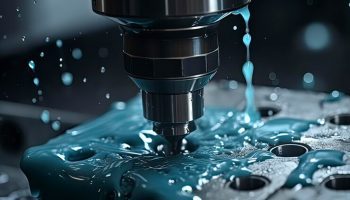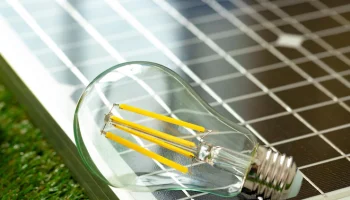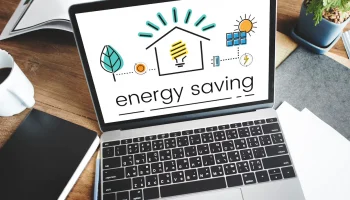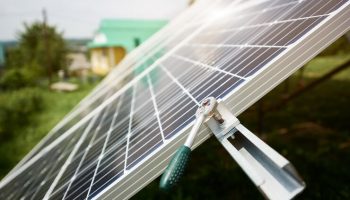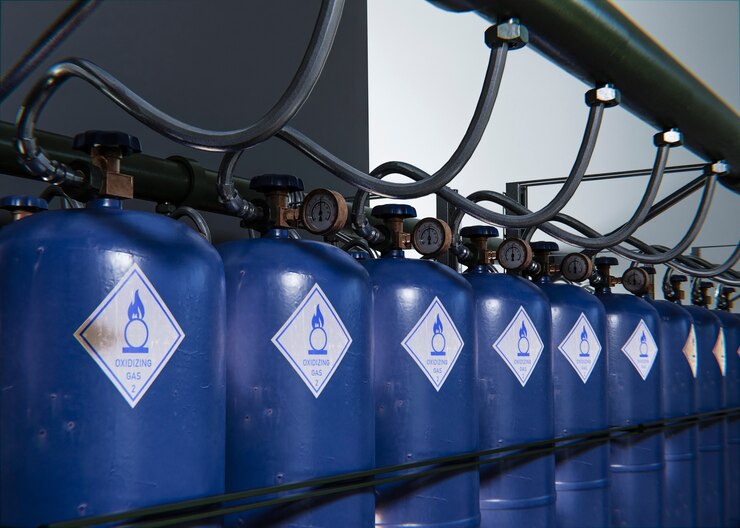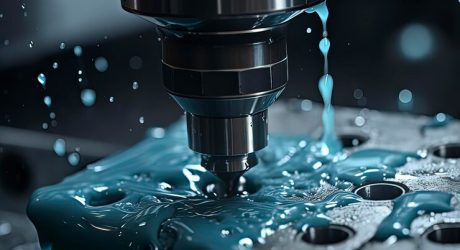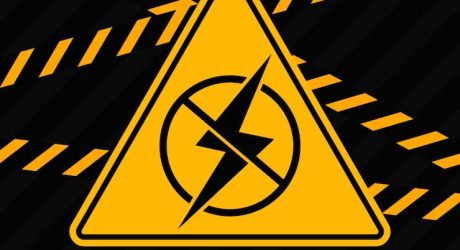Clean agent systems that store their suppression fluid іn cylinders must regularly inspect both their pressure and weight for refilling clean agent cylinders. Refilling cylinders may prove challenging as servicing engineers need to unscrew each valve, unhook each cylinder, and weigh it while also inspecting externally for defects.
The Portasteele MAX PLUS provides an effective solution by converting liquid level height found. Additionally, it has an ultrasonic liquid level indicator for agent weight, simplifying inspections and decreasing downtime.
Hydrostatic Testing
Fire suppression technicians use hydrostatic testing to verify that clean agent cylinders can withstand the pressure they’ll be exposed to during a fire event and ensure they can be filled without leakage. Cylinders failing the hydrostatic test must be destroyed as soon as possible and not used again.
Hydrostatic tests often end in failure due to leaks or deformities in cylinder walls or internal components. The goal is to minimize any such failures. Hence, it’s essential to empty and clean out the cylinder prior to testing it at the maximum allowable working pressure with water. Also, you must do this before filling to its maximum allowable pressure limit before monitoring for visible and measurable leaks over a set period of time.
Meeting DOT-Specified Requirements For Refilling Cylinders
Hydrostatic testing for containers that must meet DOT specifications, like those found in fire protection systems, typically utilizes an underwater chamber to assess expansion under pressure and when depressurized. Cylinders with low permanent expansion rates as well as between pressure expansion and decompressurization expansion levels, are considered compliant and may be returned back into service.
Corrosion Due To Hydrostatic Testing
Water used for hydrostatic testing of carbon dioxide cylinders can cause corrosion on their interior walls, so some systems opt for nitrogen instead as an inspection medium for safety reasons. It provides an effective and safer way to monitor CO2 storage containers.
What Do The NFPA Regulations State?
NFPA regulations stipulate that high-pressure cylinders be subjected to hydrostatic testing twice annually; however, this can be challenging since manufacturers rarely document the expected height of liquid inside their vessels, and servicing engineers cannot reliably ascertain what’s actually contained within these cylinders based on liquid level alone.
That is why Coltraco Ultrasonics developed devices such as Portalevel MAX PLUS and Portasteele CALCULATOR, two innovative solutions that help fire suppression system technicians convert liquid level height to agent weight measurement, thus guaranteeing traceability and compliance with NFPA regulations.
Valve Rebuild For Refilling Cylinders
Depending upon the type of fire suppression system installed, clean agent cylinders may either be refillable or factory-charged. It requires both regular inspection and maintenance to ensure they contain the correct amount of clean agent and are pressurized properly.
Each time a refillable cylinder is added back into service, one must visually check for damage or wear before accepting. Further, look for signs such as visible dents, corrosion spots, or leaks that require rejection.
Considerations Before Cylinder Acceptance
When inspecting a cylinder, technicians should take note of its tare weight as well as current and previous pressure readings. All of such records remain on the test report. Refilled cylinders, once their requalification date crosses, should again get requalified.
It is to check for damages like denting, which may cause valve prolapse, leading to sudden loss of pressure. This could eventually compromise fire suppression systems. The same remains constant when their official tare weight drops more than 5 percent.
Bringing Inert Cylinders Into Existence
Inert systems storing their suppressant in gas form should replenish every six months to remain effective. However, their cylinders do not fall under the same stringent hydrostatic testing requirements as halocarbon gases.
The latter consists of natural elements found within Earth’s atmosphere. When implemented effectively, inert systems reduce oxygen levels below 15%, which makes igniting fire impossible and thus extinguishes it effectively. If you implement it effectively, inert systems reduce oxygen levels below 15%. This eventually makes igniting fire impossible and thus extinguishes it effectively.
Refilled inert cylinders must undergo a visual inspection and be requalified every five years in accordance with CGA Pamphlets C-6 for steel and nickel cylinders, C-6.1 for seamless aluminum alloy cylinders, and C-6.3 (low-pressure aluminum cylinders). After qualifying through volumetric expansion testing, one may fill them and offer transportation before their service life expires.
Halon Refill
Halon refill is an effective but costly cleaner to refill. Therefore, it’s essential to locate a reputable supplier and service technician. He must understand the process to protect your investment and ensure its long-term viability.
What Is Halon?
Halon is a CFC that depletes ozone layers. Production ceased in 1994, yet systems using Halon still require periodic inspection and maintenance for optimal operation.
Recycling Halon has become the only available source for refilling cylinders. Alon Alternatives Research Corporation has organized the development of a Recycling Code of Practice that addresses safety and contamination risks within this valuable resource.
Components Of A Halon Refill
The gas pump (16) attached to the residual gas recovery path (15) is beneficial to introducing mixed gas remaining after component recovery into an adsorption device (17). Here, activated carbon (for instance) fillings selectively absorb halon gas from residual gas while simultaneously releasing nitrogen gas.
A vacuum pump (18) then uses compressed air from its compressor (20) to release this material. They temporarily collect halon in its buffer tank (19) and temporarily collect residual gas in its recovery tank (21).
After you fill the cylinder with recycled halon, it is necessary to remove nitrogen from the buffer tank. Further, you can mix it in the filling container (12).
Conclusion
Finally, the method of refilling cylinders reduces storage requirements by up to 50%. In comparison to inert gas agents, they remain stored as liquids. Additionally, it offers a quick and cost-effective method of maintaining the integrity of fire suppression systems. Also, protects property and people.
Read Also:










